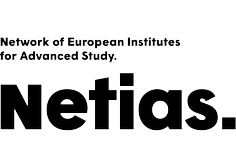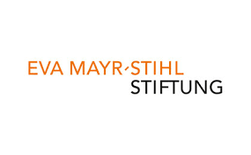Prof. Dr. Tanja Vogel
Lebenswissenschaften, Neuroentwicklungsepigenetik
Internal Senior Fellow
Oktober 2020 - Juli 2021
CV
In 2011 Prof. Dr. Tanja Vogel was recruited as professor for Anatomy to the Albert-Ludwigs-University Freiburg. She studied biochemistry until 1994 at the University of Hannover and acquired her PhD degree in 1997 from the same university working in the Institute of Human Genetics at the Medical School Hannover. Prof. Vogel worked as postdoc at the MRC Human Genetics Unit in Edinburgh till 2000 and at the Max-Planck-Institute for Biophysical Chemistry in Göttingen. In 2005 she joined the Department of Neuroanatomy at the Georg-August-University Göttingen and received the venia legendifor Anatomy together with the price for the best habilitation in 2010. Prof. Vogel is current speaker of the DFG-funded research training group "MeInBio" and heads a research group that explores basic mechanisms of transcriptional control in the specification of neural stem cells. The research focusses specifically on epigenetic mechanisms and transcription factor network activities involved in the development of the central nervous system. To understand how stem cells are instructed to exert transcriptional programs necessary to conduct proper differentiation, the group uses multi-omics and high throughput sequencing data up to the single cell level. To translate the groups expertise from animal models towards understanding human stem cell specification, iPSC- and organoid-based approaches are currently implemented in the methods repertoire.
Publikationen (Auswahl)
- Gray de Cristoforis A, Ferrari F, Clotman F, Vogel T (2020) Differentiation and localization of interneurons in the developing spinal cord depends on DOT1L expression. Mol Brain 13:85.
- Franz H, Villarreal A, Heidrich S, Videm P, Kilpert F, Mestres I, Calegari F, Backofen R, Manke T, Vogel T (2019) DOT1L promotes progenitor proliferation and primes neuronal layer identity in the developing cerebral cortex. Nucleic Acids Res 47(1):168-183
- Bovio PP, Franz H, Heidrich S, Rauleac T, Kilpert F, Manke T, Vogel T (2019) Differential Methylation of H3K79 Reveals DOT1L Target Genes and Function in the Cerebellum In Vivo. Mol Neurobiol 56(6):4273-4287.
- Weise SC, Arumugam G, Villarreal A, Videm P, Heidrich S, Nebel N, Dumit VI, Sananbenesi F, Reimann V, Craske M, Schilling O, Hess W, Fischer A, Backofen R, Vogel T (2019) FOXG1 regulates PRKAR2B transcriptionally and posttransciptionally via miR200 in the adult hippocampus. Mol Neurobiol 56(7):5188-5201.
- Weise SC, Arumugam G, Villarreal A, Videm P, Heidrich S, Nebel N, Dumit VI, Sananbenesi F, Reimann V, Craske M, Schilling O, Hess W, Fischer A, Backofen R, Vogel T (2019) FOXG1 regulates PRKAR2B transcriptionally and posttransciptionally via miR200 in the adult hippocampus. Mol Neurobiol 56(7):5188-5201.
FRIAS-Projekt
Generating isogenic iPS-cell lines carrying different FOXG1 gene mutation for studying molecular causes of FOXG1-related syndrome
FOXG1-related syndrome is a severe neurodevelopmental disease. Options for therapy of this debilitating disease are sparse because of variability of genotype-phenotype relations. To overcome limits in therapy we need to understand the molecular basis of the disease. FOXG1is a transcription factor that is indispensable for development of the forebrain. However, its plethora of molecular functions are only emerging. In the proposed research, I aim to generate human cell model systems to study molecular alterations caused by specific mutations of FOXG1. CRISPR/Cas9 technology will be used to introduce point mutations, described in human patients presenting with FOXG1-related syndrome, in human induced pluripotent stem cells (iPSC). I plan to generate five different cell lines using the same parent iPSC to study the effect of specific mutations within the same genetic background of the parent cell line. Such set-up is of importance, as variation in the genetic background can disguise or overemphasize specific molecular alterations. As our set of cell lines will be constructed under standardized conditions emerging data sets will not have shortcomings due to different handling or origin of iPSC. Whereas the main focus of this application is the generation of the different iPSC, subsequent experiments will enlighten the molecular alterations caused by FOXG1 mutation. Following our preliminary data from the mouse, experiments will reveal epigenetic alterations including histone modifications and dynamic changes of the chromatin structure, in combination with transcriptomic analysis. The latter should occur in organoids that derive from the iPSC that I am planning to generate in this project, followed by single-cell RNA sequencing.





